What is the Janka Hardness Scale?
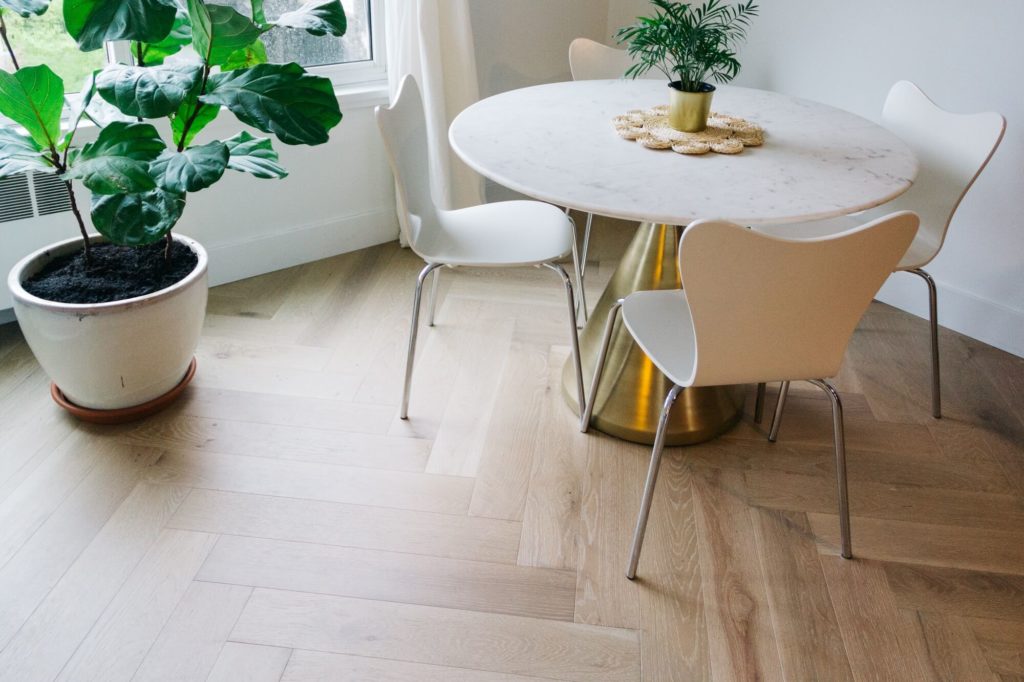
The Janka Hardness Scale determines the hardness of a particular type of wood over another. The scale was invented in 1906 by Gabriel Janka, an Austrian wood researcher, and standardized in 1927 by the American Society for Testing and Materials (ASTM).
Depending on the room where the flooring will be installed, a certain level of hardness may make it a more desirable choice. Generally speaking, the higher the number on the scale, the harder and more scratch-resistant a wood is. The harder a wood is, the more difficult it becomes to saw or run through a mill. Surprisingly enough, though, this does not impact the price for flooring. Flooring prices are dictated by how readily available the species of wood is, rather than how hard it is.
Where The Wood Hardness Scale Comes From
The scale was developed as a means for displaying the results of the Janka hardness test. The test uses a 2″ x 2″ x 6″ piece of wood and a 0.444″ steel ball to determine how hard the wood is. The test figures out how many pounds per square inch, or PSI, of force, is needed to push the steel ball halfway into the wood plank.
Janka Scale Test Variables
When the Janka test is conducted on a specimen of wood, the results may vary slightly, depending on the grain of wood used for the test. For example, if the grain is flat, it is considered normal and is presented on the Janka scale. Though vertical wood grains are tested too, those results are not usually shown on the scale. Wood is also tested on the sides or ends because that provides a different hardness rating, but these ratings are not displayed on the typical hardness scale.
What The Wood Hardness Scale Looks Like
The Janka Hardness Scale starts at zero, with this option being the softest wood choice, making it easy to dent and scratch. Though no wood on the scale has this rating, a rating like this would not make for a good floor. The highest rating on the scale is a 4000, making for an extremely hardwood, also not likely suitable for flooring because it would be so difficult to saw.
How To State The Janka Rating
This is where the Janka rating starts to get confusing for most. Stating the rating is done differently depending on the country. For instance, in the United States the Janka rating is supplied in pounds-force, whereas in Sweden it is stated in kilograms force, and in Australia, it is stated in Newtons.
What Is A “Good” Janka Rating?
When choosing flooring for a home, having an idea of the Janka scale rating will provide buyers with an indication of how strong the floor is and how much wear and tear it will be able to handle over the years before it requires repair or replacement. Even still, a “good” Janka rating serves only as an indication, because it is not just the hardness that plays a role in the appearance and durability of a floor over time. It is also the traffic, the maintenance, and prevention that dictates how well a floor will look years after it is installed.
What Is A “Bad” Janka Hardness Rating?
Balsa wood, a wood commonly used in crafts, ranks at 100 on the scale, making it the softest wood on many scales. While this type of wood would not be used for flooring, it is easy to see why a rating of 1000 or higher is the standard for flooring options. No rating is really “bad” when it comes to flooring options, for the very reasons we’ve already mentioned.
A Closer Look At Oak Wood Flooring
Oak is the most popular wood flooring choice, but where does it rank on the scale? White oak has a rating of 1360 and red oak has a rating of 1260. Other flooring types rate harder and softer than this, so what makes oak so special? Most likely it is the abundance of oak available for sawmills leading to its mass production for flooring purposes that makes it an affordable option. The more affordable something is to the general public, the more widely used it is likely to be. This isn’t to say that oak isn’t a strong wood, as oak planks are an excellent choice for homes. Going strictly by the Janka rating, there are other choices out there for harder woods.
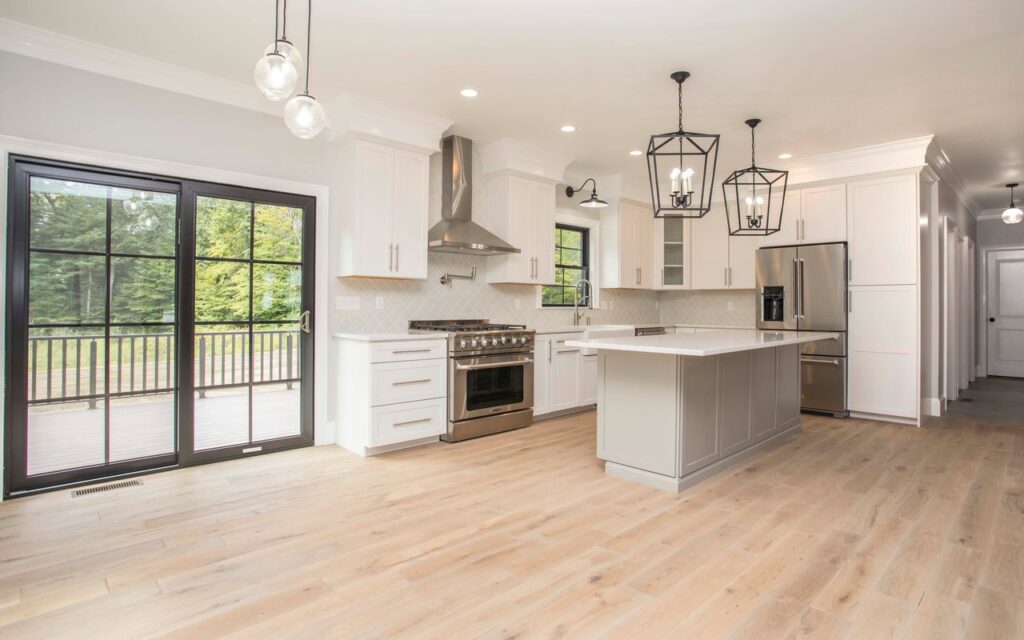
A Closer Look At Engineered Hardwood
Where do engineered hardwoods stand on the Janka Hardness Scale? They don’t, really. Why? Since these hardwoods are made with a layer of softer wood beneath them, their hardness cannot really be gauged correctly with the scale. Little information is available on how these engineered woods would fit into the scale because of the variances in materials used to build the layers of flooring from brand to brand. Logic and reason indicate that engineered flooring with a thicker veneer of solid hardwood would be stronger, but this may or may not be the case. To make things simple, do not focus on the Janka Hardness Scale when purchasing an engineered wood floor.
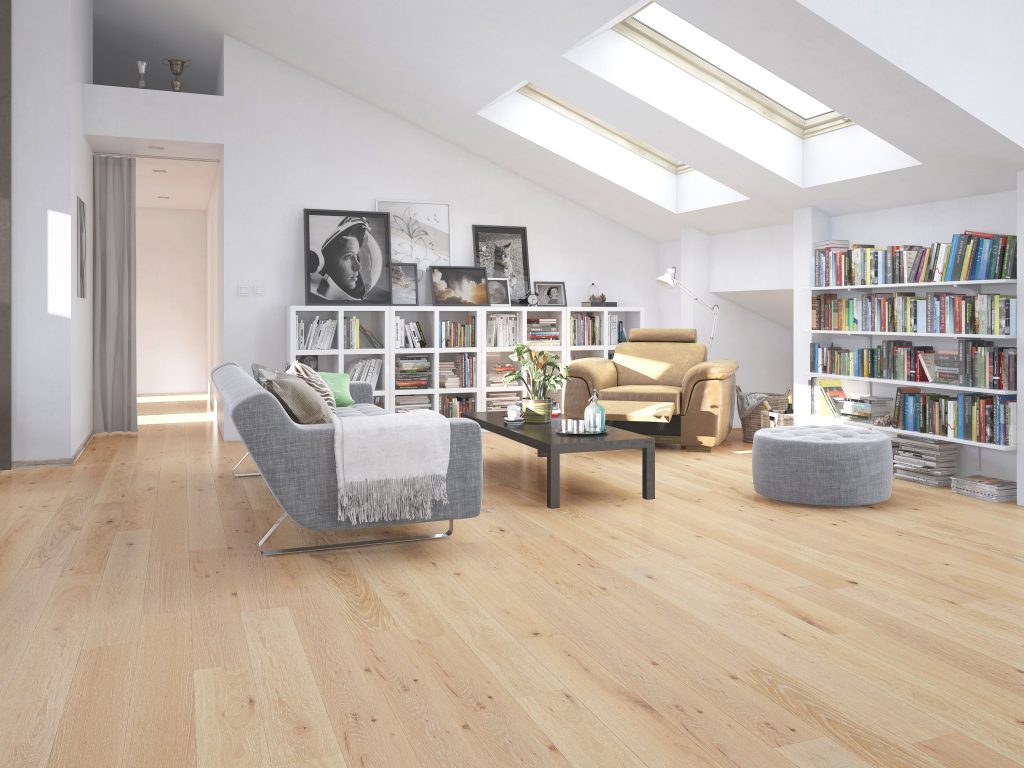
SKU: 15271129
A Closer Look at Bamboo
Bamboo flooring, like any other material, has its advantages and disadvantages. That being said, the strengths far outweigh the weaknesses. Literally. When it comes to looking at Bamboo performance on the Janka Scale, all the best quality strand woven bamboo can be found at the strongest end of the spectrum. Promising strength and hardness comparable to exotics like Eucalyptus (4000 – 5000 Janka rating), strand woven bamboo is rated as one of the strongest materials on the Janka Scale period. Depending on the quality of manufacturing, the best bamboo flooring products can range from 3,800 – 5,000.

Hardwood vs. Softwood
Let’s take a closer look at hardwood and softwood in a home to demonstrate how care and maintenance play a considerable role in the appearance of floors years down the road. Consider two homes by the beach, where sand will provide the means for scratching on the floor surface.
Home A uses a softwood, such as American Cherry (950 on the Janka Scale). The owners take extreme care in cleaning the floor and keeping the sand from the inside of the home. Ten years after the installation, the flooring looks as new as it did the day it was installed. The residents of the home include children and pets, all of whom stay active. The Janka Hardness Scale may lead people to believe this would be a bad flooring choice, when in all actuality, it may be the perfect one!
Home B uses a fairly hard wood, such as Brazilian Cherry (2820 on the Janka Scale). The owners are not known for cleaning up after themselves and maintain a highly active lifestyle. Six years after the installation, the floor looks terrible and may need replacement. The Janka Hardness Scale may lead people to believe this is a better choice of flooring, simply because it is harder than its American Cherry counterpart when that’s not necessarily the case.

Can Softer Mean Stronger?
Don’t confuse the hardness of the flooring with its strength. The hardness serves only as an indicator of how well the floor will withstand wear and tear day to day, rather than how strong the wood is. Do not relate the hardness or softness to the way the wood feels, as this has no bearing on that aspect of the flooring. This scale also has nothing to do with how soft a floor is in terms of comfort.
What Does All Of This Mean?
Choose a hardwood floor based on its look and price before anything else. The bottom line is that no matter what, wood will need to be taken care of correctly to withstand the wear of time. If it isn’t taken care of, it doesn’t matter how hard or soft it is. If a decision cannot be reached, try using the Janka rating to gauge the hardness of the wood, solely as an indicator of how well the wood will be able to stand up to furniture, pets, children, and everyday life. Softer woods don’t always mean earlier replacement and repairs, so going with look and price first is always the best bet.

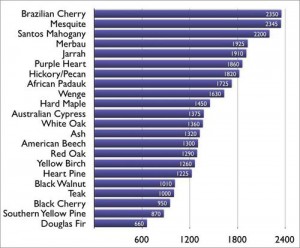

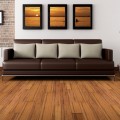
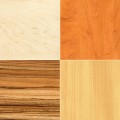
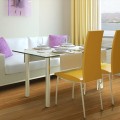
Pingback: What to Consider When Choosing a Hardwood Floor - LLDS Home Store & Interior Design
paul
What is the hardness of your Mongolian Teak, on the sample I received from you it states 188C, is that a typo? Is Mongolian Teak hard enough to hold up to dogs claws from scratch marks? Are you aware of any drawbacks to Mongolian Teak?
BuildDirect Product Expert Team
Hi Paul,
Yes, that is a typo. Mongolian teak has an average janka rating of 1880 and it is hard enough to stand up to dogs and scratches. That being said, we can’t 100% guarantee the floor won’t scratch if the dog is running and slipping and sliding around or if heavy furniture is dragged on the floor. One thing to consider with Mongolian teak is the type of climate you have in the area you live. If there are large changes in humidity during the seasons you may want to go with a domestic species or engineered hardwood rather than teak. Exotic species of hardwood are more susceptible to changes in humidity. Please let us know if you have any other questions!
Pingback: Hardwood Hardness Ratings | Reno, Tahoe, NV
Seth
Will a Patagonia rosewood at janka 1340 still receive nails from a standard floor nail gun?
BuildDirect Product Expert Team
Hi Seth,
Thank you for getting in touch. Yes, a regular nail gun should be sufficient to install a Patagonia Rosewood hardwood floor. Please let us know if there is anything else we can help out with!
James Campenella
I am a Real Estate Developer and General Contractor looking for a Good, Green, Bamboo floor for a Yoga Studio (aprrox. 1600 SF) immediately.
BuildDirect Product Expert Team
Hi James,
Thank you for getting in touch! I have included the link below to all our bamboo products:
https://www.builddirect.com/Bamboo-Flooring-Results.aspx
Please feel free to take a look and order a few free samples to see the products in person. If you have any other questions or need some suggestions please give us a call, toll free, at 1-877-631-2845 and one of our bamboo product experts will be able to answer all your questions!
Pingback: Bamboo Flooring Buying Checklist » Blog Archive » Bamboo Vietnam
Pingback: Why wood tile? @ brittanyMakes
Pingback: Why wood tile? @ brittanyMakes
Pingback: Hardwood Flooring Dos and Don’ts
mundy
wondering do you have contractors to put the flooring in
David Buschman
Hello, We are looking for a wood floor that can hold up to 3 large dogs and an active family. We have oak floors with cherry stain and they are all scratched up. PLease advise the best the wood floor for this situation
Thank you
Rachelle
This website is awesome! We are doing our homework picking out flooring, counter tops, and cabinets so we can provide that to the contractors for bids on our job. This website will be a huge help!! I just wish I found it before 10;45pm. Looks like I’ll be up for awhile!